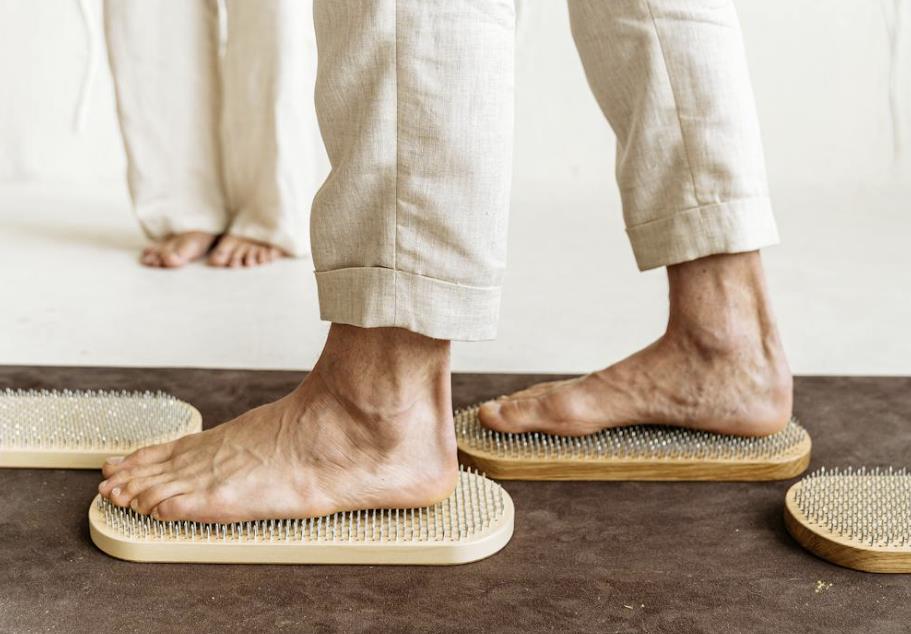Sleep apnea is a condition in which a person’s breathing is repeatedly interrupted during sleep. This can cause the person to wake up frequently during the night, leading to poor-quality sleep and excessive daytime sleepiness. In this blog post, we are uncovering the mysteries of Sleep Apnea. Here you can understand the Symptoms, Causes, and Treatment Options.
Sleep Apnea Overview
Sleep apnea is a sleep disorder characterized by repeated interruptions in breathing during sleep. It occurs when the muscles in the back of the throat fail to keep the airway open, even as the person continues to try to breathe. This can lead to snoring, choking, and pauses in breathing that can last from a few seconds to several minutes.
-
The most common form of sleep apnea is called obstructive sleep apnea (OSA), which is caused by physical blockages in the airway.
-
Other forms of sleep apnea include central sleep apnea, which is caused by problems with the brain’s ability to regulate breathing, and complex sleep apnea syndrome (also known as treatment-emergent central sleep apnea), which is a combination of both OSA and central sleep apnea.
Sleep apnea can have serious consequences for overall health, including increased risk for high blood pressure, heart disease, stroke, and other cardiovascular problems, as well as cognitive and memory difficulties, and decreased quality of life. The good news is that sleep apnea can be effectively treated with lifestyle changes, medical devices, and, in some cases, surgery. If you suspect you have sleep apnea, it’s important to see a doctor to get a proper diagnosis and appropriate treatment.
Symptoms:
Sleep apnea is a sleep disorder characterized by pauses in breathing or shallow breaths while sleeping. The following are some common symptoms of sleep apnea:
-
Snoring: Loud and persistent snoring can be a sign of sleep apnea.
-
Choking or gasping during sleep: People with sleep apnea may make choking or gasping sounds as they struggle to breathe.
-
Daytime sleepiness: People with sleep apnea often feel excessively sleepy during the day.
-
Insomnia: Sleep apnea can also cause difficulty falling asleep or staying asleep.
-
Headaches: A person with sleep apnea may experience headaches, especially in the morning.
-
Dry mouth or sore throat: Sleeping with an open mouth can lead to a dry mouth and a sore throat.
-
Attention problems: People with sleep apnea may have trouble concentrating and paying attention.
-
Mood changes: Sleep apnea can lead to irritability, depression, and mood swings.
If you are experiencing one or more of these symptoms, it is recommended that you speak with a healthcare provider. They can help determine if sleep apnea is the cause and provide treatment options. This is a chronic condition, which means it cannot be cured. However, it can be effectively managed with appropriate treatment. The goal of treatment is to alleviate symptoms, reduce the frequency and severity of sleep apnea episodes, and improve the overall quality of life.
Causes:
Sleep apnea is caused by a number of factors that can interfere with normal breathing during sleep. Some common causes of sleep apnea include:
-
Obstructive sleep apnea (OSA): This is the most common form of sleep apnea and is caused by a physical blockage of the airway, such as the tongue or excess fat in the neck.
-
Central sleep apnea (CSA): This form of sleep apnea is caused by a problem with the brain signaling the muscles to breathe.
-
Obesity: Being overweight or obese can increase the risk of sleep apnea, as excess fat can accumulate in the neck and cause the airway to become narrowed.
-
Smoking: Smoking can irritate and inflame the airways, increasing the risk of sleep apnea.
-
Alcohol and sedative use: Alcohol and sedatives can relax the muscles in the airway, increasing the risk of sleep apnea.
-
Age: The risk of sleep apnea increases with age.
-
Family history: A family history of sleep apnea can increase the risk of developing the disorder.
-
Gender: Men are more likely to develop sleep apnea than women.
-
Nasal congestion: Chronic nasal congestion can increase the risk of sleep apnea.
-
Use of certain medications: Some medications, such as muscle relaxants and tranquilizers, can increase the risk of sleep apnea.
It’s important to note that having one or more of these risk factors does not necessarily mean that you will develop sleep apnea. A comprehensive evaluation by a healthcare provider is necessary to determine the cause and the best course of treatment.
Complication:
Sleep apnea can lead to a number of serious complications if left untreated. Some of the most common complications include:
-
High blood pressure: Sleep apnea can lead to high blood pressure, which can increase the risk of heart disease, stroke, and other cardiovascular problems.
-
Heart problems: Sleep apnea can increase the risk of heart attacks, irregular heartbeats, and heart failure.
-
Stroke: People with sleep apnea are at an increased risk of stroke.
-
Diabetes: Sleep apnea can make it more difficult to control blood sugar levels, which can increase the risk of developing diabetes.
-
Depression and anxiety: Sleep apnea can lead to feelings of depression and anxiety and can make existing mood disorders worse.
-
Cognitive impairment: Sleep apnea can impair thinking and memory and increase the risk of developing dementia.
-
Sexual dysfunction: Sleep apnea can lead to erectile dysfunction in men and decreased sexual desire in both men and women.
-
Vehicle accidents: People with sleep apnea are more likely to be involved in vehicle accidents due to excessive daytime sleepiness.
-
Work-related accidents and decreased productivity: Sleep apnea can also increase the risk of workplace accidents and decreased productivity.
If you are experiencing any symptoms of sleep apnea, it is important to speak with a healthcare provider. They can help diagnose the condition and provide appropriate treatment to reduce the risk of complications.
Treatment and Test
The treatment of sleep apnea varies depending on the severity of the condition and the individual patient. Some common treatments include:
-
Continuous positive airway pressure (CPAP): CPAP is the most common treatment for sleep apnea. It involves wearing a mask over the nose or mouth to deliver pressurized air to keep the airway open.
-
Lifestyle changes: Losing weight, quitting smoking, and avoiding alcohol and sedatives can help alleviate symptoms of sleep apnea.
-
Oral appliances: Custom-fitted oral appliances can be used to reposition the jaw and tongue to help keep the airway open.
-
Surgery: In severe cases of sleep apnea, surgery may be necessary to remove excess tissue from the airway or to reposition the jaw.
-
Positive airway pressure with adaptive servo-ventilation (ASV): This type of positive airway pressure therapy uses advanced algorithms to deliver precise pressure to the airway, helping to keep it open during sleep.

Sleep Apnea. Here you can understand the Symptoms, Causes, and Treatment Options. The good news is that sleep apnea can be effectively treated with lifestyle changes, medical devices, and, in some cases, surgery. Photo Credit – Pexels






